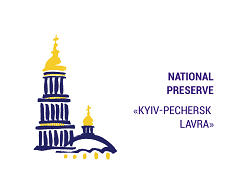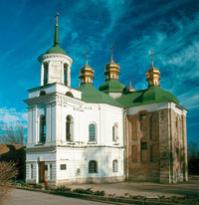“Memories of Kyiv-Pechersk Lavra” photo project

Remembering St. Paul, Metropolitan of Tobolsk
November 17, is the day of remembrance of St. Paul, Metropolitan of Tobolsk. He was a famous Ukrainian church figure, preacher, missionary, teacher of Kyiv-Mohyla Academy, one who has taken monastic vows in Kyiv-Pechersk Lavra. Given that he was buried in the crypt under St. Stephen’s Chapel of the Dormition Cathedral, there is the opportunity to talk about this figure and the fate of his burial. We are going to do it in a series of issues dedicated to the Great Pechersk Church and its research in the late 20th century.
Saint Paul (in peace - Petro Konyuskevych or Konyushkevych) was named after Carpathian village of Konyushky, where his family originated from. His year of birth is 1705 and place - the city of Sambir in Lviv region. He graduated from Kyiv-Mohyla Academy. Later, in 1733, he took monastic vows in Kyiv-Pechersk Lavra and worked as a teacher in the primary grades of the Academy. In 1735 he was appointed the treasurer of Lavra’s Printing House and the seller of its publications. In autumn 1738, he returned to Kyiv Academy, where he taught a course of poetry. In January 1741, the talented teacher was summoned from Kyiv to Moscow and appointed the preacher of the Moscow Slavic-Greek-Latin Academy. Two years later he was transferred to Novgorod diocese and appointed archimandrite of St. George’s (Yuriev) Monastery. In March 1758, the archimandrite was ordained Metropolitan of Tobolsk and Siberia and became known for his missionary work and enlightenment. Metropolitan Paul built more than 20 stone churches and opened a number of new parishes. At the same time, he incured the wrath of the highest imperial leadership because of his protests against the interference of the secular authorities into Church affairs and intention to secularize its lands. Therefore, in April 1768, Metropolitan Paul was forced to ask the Holy Synod to relieve him from his position “because of old age and weakness”. After that he returned to Kyiv-Pechersk Lavra, where he spent the last two years of his life. Metropolitan Paul died on November 4 (17), 1770, and was buried in the Dormition Cathedral. Since mid-19th century, when incorruptible relics of Metropolitan Paul were discovered, people started honouring his memory. In the early 20th century preparations for the official canonization of this religious figure were already in full swing despite the fact that the First World War hampered them.
The explosion of the Dormition Cathedral completely destroyed the crypt with the body of St. Paul in it. Attempts to find his relics were made several times but crowned with success only in 1999 during the archaeological excavations. The burial of the Saint was fully opened. The relics were transferred to the Far Caves, where they rest up to the present, and the remains of the tomb were transferred to the funds of the Preserve. Some details of the crypt decoration have been restored and are now on display at “Renewed Treasures of Kyiv-Pechersk Lavra” exhibition (building № 1).
Next week we are going to complete the story about the archaeological research of the Dormition Cathedral, which was carried out in the late 20th century.
Captions to the illustrations:
1. Portrait of Metropolitan Paul of Tobolsk and Siberia (Fund collection of the National Preserve “Kyiv-Pechersk Lavra”, KPL-P-63)
2. Tomb of Metropolitan Paul in the crypt near St. Stephan Chapel of Dormition Cathedral (Fund collection of the National Preserve “Kyiv-Pechersk Lavra”, KPL-F-10084)
3. Clearing the tomb
4. Meeting before the opening of the tomb. From left to right: archaeologist Serhii Balakin, General Director of the Preserve Serhii Krolevets, inhabitant of Kyiv-Pechersk Lavra hieromonk Joseph; camera man - Oleksandr Rosly
5-7. Tomb of the Saint after clearing
8-9. Excavation findings: hand cross (ill. 8), candlestick (ill. 9)
10-12. Paste-up details of the tomb decoration before the restoration: a corner detail in the form of a cherub (ill. 10); overlay with the image of Metropolitan Paul (ill. 11), overlay with the inscription (ill. 12)
13. Paste-up details after restoration (restorer: Anatoliy Marchenko)
14. Showcase with restored items at one of the expositions of the Preserve
15. Stand fragment with the story about the restoration of the tomb.







































